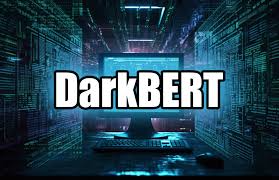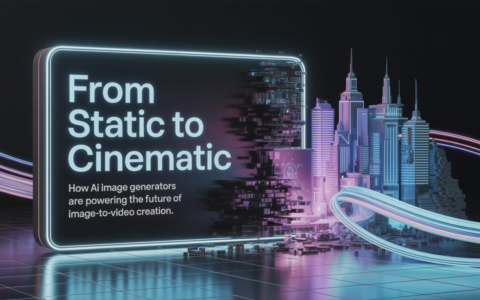The dark web has long been linked to illicit activity and extreme anonymity. It is a secret section of the internet that can only be accessed with specialist software like Tor. One recent and alarming development in the murky backstreets of this uncharted territory is the rise of sophisticated artificial intelligence (AI) technology.
One of these innovations is DarkBERT, an AI made to search and comprehend material on the dark web. This article explores DarkBERT’s history, capabilities, ramifications, and ethical issues, providing insight into how artificial intelligence is influencing cyberactivity in the dark web.
Origins and Development of DarkBERT
The architecture of BERT (Bidirectional Encoder Representations from Transformers), an AI created by Google for natural language processing, serves as the foundation for DarkBERT, a highly evolved artificial intelligence model. BERT alone transformed a number of facets of AI-driven language processing, making it possible for computers to understand and produce human language with previously unheard-of precision. To build on this, DarkBERT was trained using data that was specially taken from the dark web and deep web links.
The goal of the DarkBERT research and development team was to produce a tool that could analyze the large amount of unstructured, frequently cryptic material that can be discovered on the dark web. They created an artificial intelligence (AI) that can comprehend the context and subtleties of this secret area of the internet by feeding it data from a variety of dark web sources, such as forums, markets, and private messages.
Capabilities of DarkBERT
DarkBERT is an effective tool for accessing and analyzing material on the dark web because of its broad and comprehensive set of functions. These are a few of its primary features:
Classification and Content Analysis
DarkBERT is capable of classifying and analyzing massive amounts of text data from the dark web. It can recognize themes, attitudes, and certain kinds of information, such as conversations concerning guns, illicit narcotics, or hacking methods. For those working in cybersecurity and law enforcement who must keep an eye on and evaluate dark web activity, this skill is essential.
Measuring Anomalies
In the data it crunches, the AI is able to identify odd patterns and abnormalities. This is especially helpful in spotting new risks, such as fresh techniques for cybercrime or abrupt increases in conversations about certain illegal acts. The proactive evaluation and mitigation of threats are aided by anomaly detection.
Interpretation and Translation of Languages
The dark web is a worldwide network with multilingual material. By interpreting and translating material from a variety of languages, DarkBERT can overcome language constraints that frequently impede dark web monitoring operations.
User Behavior Analysis
By analyzing user activity patterns, DarkBERT can assist in identifying important actors, repeat offenders, and possible dangers. Artificial intelligence (AI) can help with the profiling and monitoring of those engaged in illicit activity by gaining knowledge of how users behave on the dark web.
Consequences of DarkBERT
The implementation of DarkBERT bears noteworthy consequences in several domains:
Cybersecurity and Law Enforcement
DarkBERT is a useful tool for law enforcement organizations in their battle against cybercrime. It can help locate illicit markets, identify cybercriminals, and collect proof for legal actions. DarkBERT is a useful tool for cybersecurity companies to improve their threat intelligence and remain ahead of cyberattacks that come from the dark web.
Ethical and Privacy Concerns
The application of AI on the dark web, such as DarkBERT, presents serious ethical and privacy issues. Although it can be useful in the fight against illicit activity, it can also be abused. Between lawful surveillance and invasive monitoring, there is a thin line. To avoid misuse, it is essential to make sure DarkBERT is used morally and legally.
Effect on Dynamics of the Dark Web
The dynamics of the dark web may change if sophisticated AI is present. Cybercriminals may be forced to use new strategies to avoid discovery if they are aware that advanced AI technologies are keeping an eye on their actions. The game of cat and mouse between cybercriminals and those pursuing them is probably going to get more intense.
Difficulties with Regulation and Law
Using DarkBERT for dark web surveillance has legal and policy issues. Different countries have different regulations when it comes to data gathering, privacy, and monitoring. It is imperative to navigate various legal environments to guarantee that the implementation of DarkBERT does not infringe any rights or international regulations.
The Future of Dark Web Monitoring
DarkBERT and other AI technologies will probably play a bigger part in dark web surveillance as they develop. These artificial intelligence (AI) tools will become even more potent in the fight against cybercrime as machine learning, natural language processing, and data analytics continue to progress. To make sure that these technologies are utilized for the greater good, it will be necessary to address ethical, legal, and technological issues on a continuing basis.
Conclusion
DarkBERT is a major development in the use of AI for tracking and comprehending the dark web. Although its capabilities provide cybersecurity and law enforcement experts with useful tools, they also present a number of ethical, legal, and societal issues. Striking a balance between utilizing AI’s promise to fight cybercrime and defending privacy and moral norms is crucial as we traverse this new territory. Our capacity to ethically balance these conflicting demands will determine the direction of AI-powered dark web surveillance in the future.






